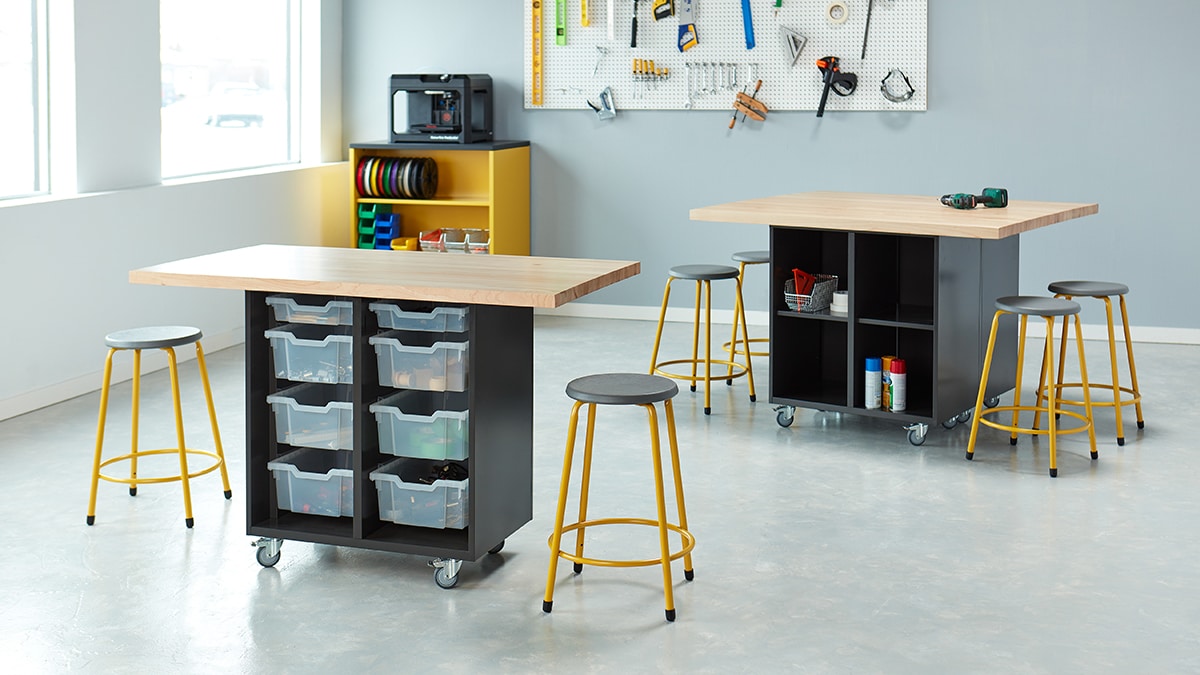No word has as many uses and applications as the F-word.
I’m referring, of course, to “flexibility.”
Flexibility can denote the quality of bending easily without breaking; the ability to be easily modified; or a willingness to change or compromise.
In the design world, people throw this F-word around a little too freely. If every space or furniture solution is designed for flexibility, then none is.
Asking the Tough Question
So, we decided to dig a little deeper and explore what people really mean when they say they’re looking for flexibility.
Over the past several weeks, we’ve asked educators and designers, “What does flexibility mean to you inside education?” The responses below have been lightly edited for clarity.
According to a middle school principal, flexibility is all about giving students control over their space.
“One word comes to mind: options. Providing different options for students gives them ownership over the classroom. It frees them up to adapt to the classroom in a way that allows them to learn best.”
The superintendent of a K-12 school district shared that flexibility means being willing to change when something isn’t working.
“Flexibility is about accepting the idea that your plans can change very quickly -- sometimes without notice. Receiving criticism, both good and bad, from stakeholders and advisers is a part of flexibility because it forces you to change what you’re doing. Being flexible as an educator means being responsive and incorporating feedback into your practices.
“Adaptability is about adjusting to change that’s out of your control. It includes acclimating yourself to changing roles, job responsibilities and schedules. If leaders and educators can’t do that, it will be difficult for them to give students, staff and stakeholders the best learning experience they can possibly get. Flexibility and adaptability in schools go hand-in-hand.”
The director of learning environments at a university told us that flexibility is about meeting varying needs across campus.
“Flexibility embodies accommodation. It demonstrates the acceptance of behavior for everyone to do what they want or need in the manner they need to do so. This starts with students but extends to educators and faculty equally.”
According to a designer who focuses mainly on K-12 projects, flexibility means thinking outside the box -- and letting students do the same.
“First, flexibility is a fear for some. Sadly, many administrators hear the word ‘flexibility’ and immediately think of bumper cars in the classroom. But that short-sightedness causes them to miss out on the benefits. By trusting their students with freedom in the classroom and their personal space, educators allow their students to grow, improve executive function skills and engage in a learning style that best fits them. By restricting their students in a rigid classroom, they’re not appealing to all learning types. And they’ll miss out on many great interactions and inspirational moments generated from learning outside of the norm.
“Second, flexibility is opportunity. When I first started working from home, I felt stuck. I had a hard time thinking creatively as I stared at the same blank wall all day and my feet never left one spot. I used to walk through the office, sit and move through different spaces or drive home during lunch to change up how I was thinking through a situation. I realized that as I move and change positions, I reconnect my body and brain. I improve my way of thinking. By creating a flexible environment, you create opportunities for engagement, whether it be in your own mental space or with the people around you. You can perceive things differently and find new solutions.”
Finally, a K-12 director of operations told us that flexibility is the only way to prepare for the future.
“People ask me ’What is the classroom of the future?’ The answer is that no one knows. I’ve spent decades working for traditional public schools, public charters and private schools. And in that time, I’ve seen the rate of change accelerate every day with regards to teaching methods. The tools our teachers use, the needs our students have and the challenges kids will need to answer when they enter the workforce are changing daily. So, the spaces that incite their learning must be as adaptable and resilient as our students and our teachers each and every day.”
Digging Deeper
In design and education, the F-word certainly has a positive connotation. At KI, we challenge our partners -- students, teachers, administrators and community members -- to be specific about what they mean by flexibility and how it applies to their needs for learning and teaching.
We do this at every level of interaction with schools, design partners and dealer support. Such specificity can help us create learning spaces tailored to the unique needs of individual students, teachers and even entire schools.
What does the F-word -- flexibility -- mean to you?

